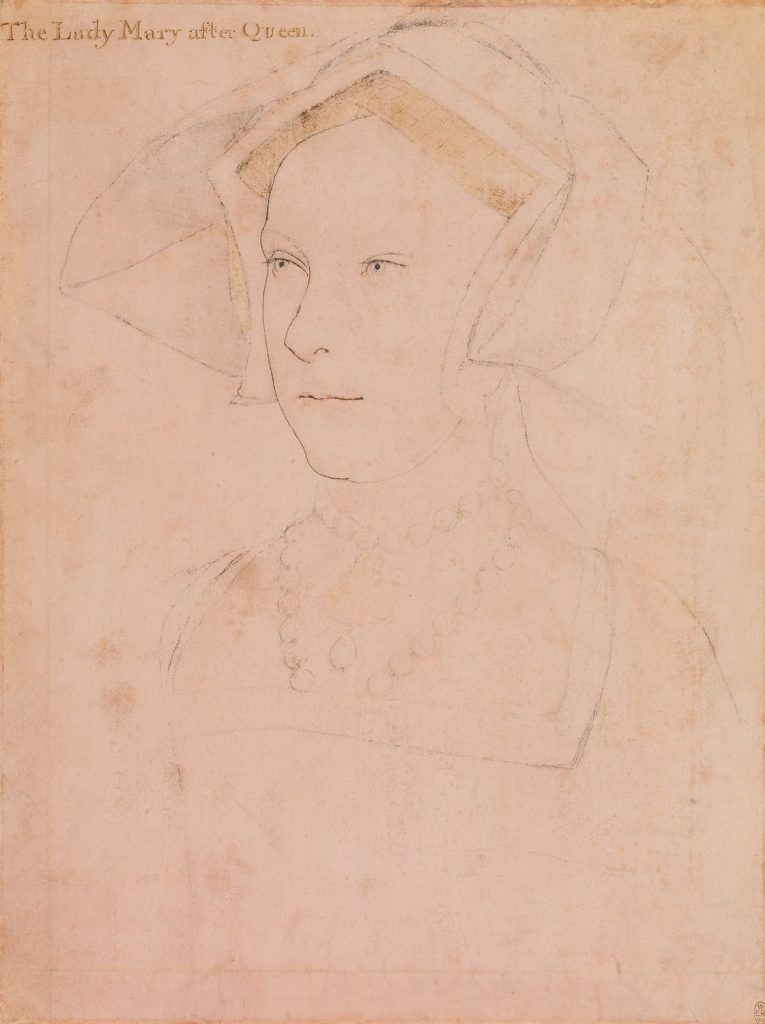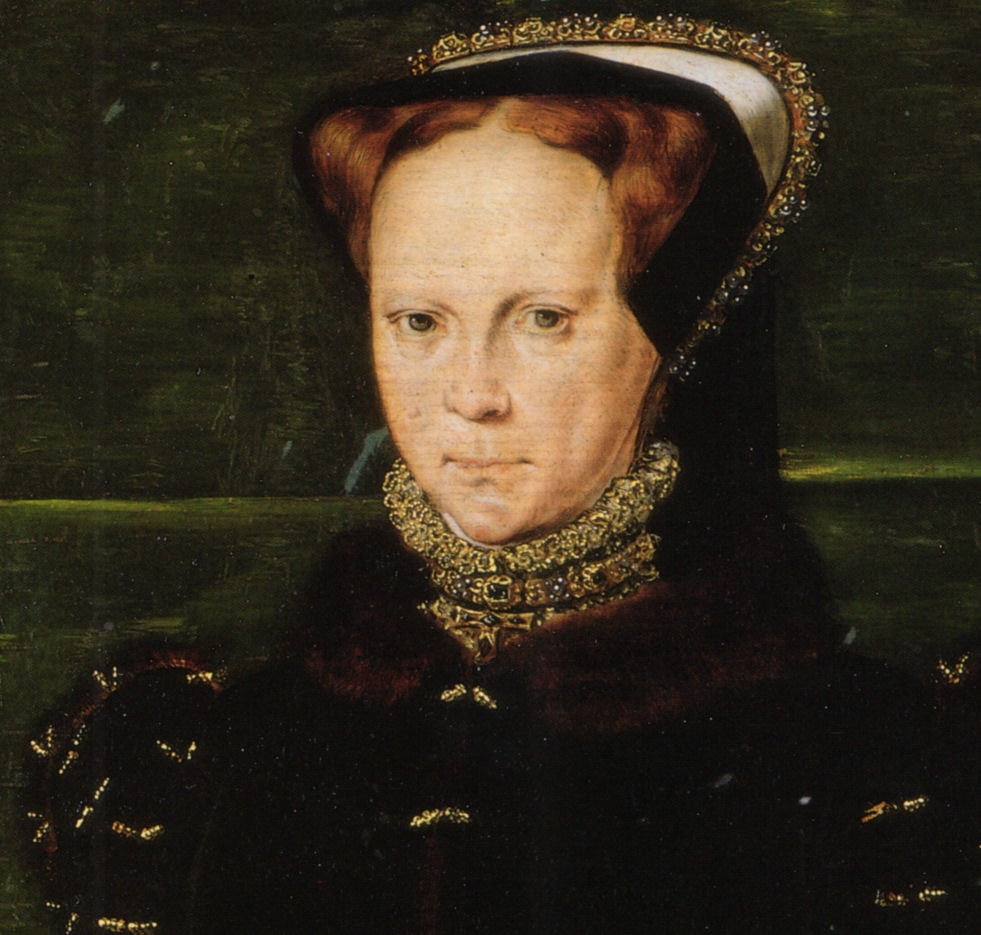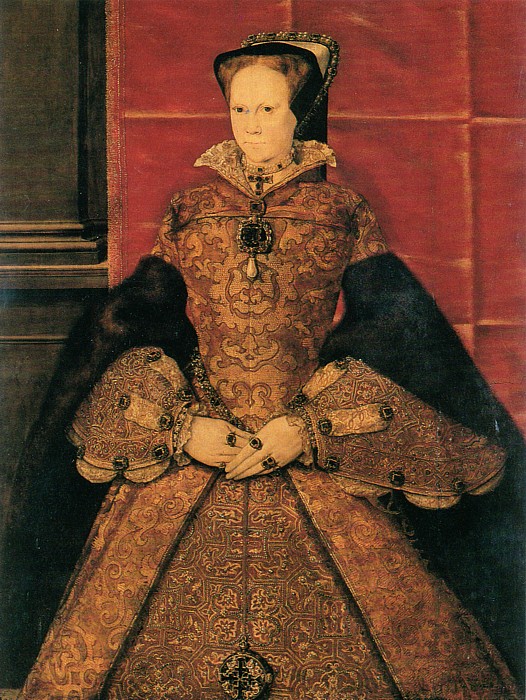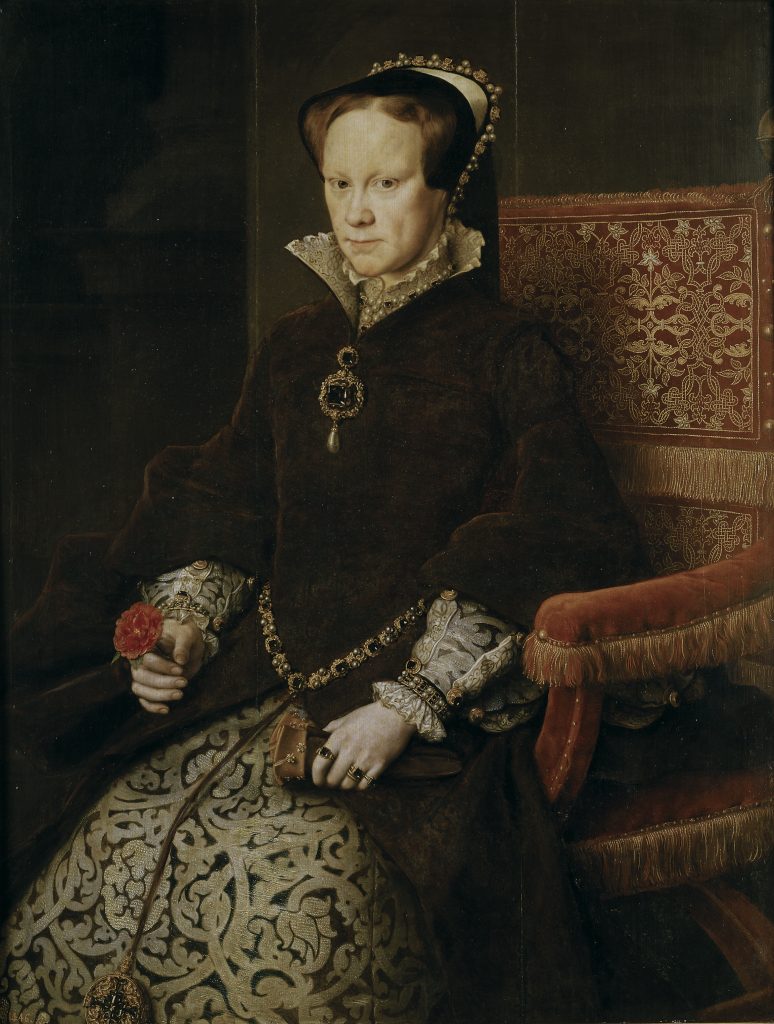Listen to this article
Mary I of England is often remembered for her phantom pregnancies, but her poor eyesight was one of her longest and most debilitating illnesses.
Her eyes are so piercing that they inspire not only respect, but fear in those on whom she fixes them, although she is very short-sighted, being unable to read or do anything else unless she has her sight quite close to what she wishes to peruse or to see distinctly.
Giovanni Michieli, the Venetian ambassador on Mary I, 1557
Mary the princess
Perhaps Michieli was trying to give Mary I an air of reverence when he described her stare as piercing. In reality, the queen was chronically short-sighted for most of her life, unable to see much further than a few feet, and in constant pain.
Mary was a bright and invested child, who was given the best education by scholars that included Erasmus, and who excelled in languages. But she was also fun and lively, passionate about dancing and a highly skilled lute, virginals and spinet player. In 1522 she was asked to dance and play for the Spanish emissaries who recorded that ‘she performed a slow dance and twirled so prettily that no woman in the world could do better,’ whilst her playing was done with ‘…unbelievable skill, and such self-command as a woman of twenty might envy,’ Mary was four.
As she grew, she showed an interest in riding, hunting and hawking, plus she played bowls and, contrary to her often dour reputation, she loved to gamble.1Loades, David, Mary Tudor, p234
But in 1531 Mary began to suffer with the ill-health that would plague the rest of her life. Her doctors recorded vomiting, menstrual abnormalities, violent headaches, low mood, heart palpitations and indigestion. Her symptoms could vary widely and not all of them would appear every time, but Mary would never really be well again.

Unquestionably, her physical condition owed a great deal to the stress she found herself in. Having sided with her mother, Katherine of Aragon, and her religion against her father’s determination to dissolve his marriage, Mary found herself ostracised and in fear of her life. The king’s own doctor reported that her illness was ‘partly the result of the worry and extreme annoyance to which she had been subjected’.
The danger increased as each year passed; the Spanish Ambassador, Chapuys, reported in 1534 that Mary had confided in him that ‘the King himself has said that he would make her lose her head for violating the laws of his realm.’


Mary the Queen

There is no record of when Mary’s short-sightedness began, but it was a well known characteristic by the time she became queen in 1553. Although eyeglasses had existed for centuries2http://www.mrcophth.com/Historyofophthalmology/spectacles.htm, Mary does not seem to have worn them. This was probably because the wearer would either have to constantly hold them or balance them on the bridge of their nose, and given that Mary reportedly had a low-bridged nose, she probably found them uncomfortable or annoying. Historian, David Loades, concluded that she did not use them either due to vanity or lack of advice from her doctors3Loades, David, Mary Tudor, p232.
None of her portraits show her either wearing or holding glasses, despite there being a fashion at the time to depict people with them, but this is not unexpected. Her father owned 44 pairs at the time of his death but no one would expect to see the all-powerful Henry VIII advertising his weakness by sporting a pair of spectacles.
The possible causes of Mary's eyesight loss
So what was the cause of her eyesight loss?
It may just have been a natural decline, or she may have inherited it from her father who was equally short-sighted and who bought ten pairs in 1545 alone for a total of 3 shillings and 4 pence.
A modern diagnosis, however, is that it was a symptom of a Prolactinoma Pituitary Tumour4 V C Medvei and Milo Keynes. This often benign tumour presses against the pituitary gland, situated behind the bridge of the nose and under the brain. As part of the endocrine system, the gland helps to regulate hormones5Pituitary Foundation. The tumour destabilises this regulation, causing the gland to release either too much or too little hormone, which in turn affects bodily functions. In fact, some of these tumours will also produce hormones themselves (known as prolactinoma), which floods the body and tricks it into thinking it is pregnant.
As we know, Mary had two phantom pregnancies where her stomach swelled, her cycles stopped and she produced milk. These are all known side-affects of the tumour. Her early difficulties with her menstrual cycle (particularly their absence) can also be attributed to the tumour. In addition, it can also affect the thyroid gland which causes many of the other symptoms Mary displayed, including the loss of eyebrows, flushed cheeks and deep voice.
A large tumour will also reach the optic nerves which pass over the top of the gland, causing severe headaches and vision problems. We can see that Mary was a visually active child, able to sew, hunt, ride, read and learn to play music, but by 1557 she had practically given all these up as her tumour grew and her short-sightedness increased.

Mary I became well known for her stare and for positioning documents close to her face in order to read them. By the end of her life she was virtually blind and the strain of always squinting to see people would have contributed to her already piercing headaches. This may have contributed to her noticeable aversion of the things which had once given her pleasure. She was now in almost constant pain and she suffered from depression and long bouts of weeping. Living in a constantly blurred world would have only made that worse.
Further reading
Abernathy, Susan. (2018) ‘The Illness and Death of Queen Mary I’. The Freelance History Writer. Retrieved 27 July 2022.
Johnson, Paul (1974) Elizabeth I: a study in power and intellect. London: Weidenfeld and Nicolson.
Milo Keynes (2000) ‘The Aching Head and Increasing Blindness of Queen Mary I’. Journal of Medical Biography, 2000, Vol 8, pp102-109.
Loades, David. (2012) Mary Tudor. Stroud: Amberley.
Marshall, Rosalind K. (1993) Mary I. London: HMSO.
Medvei, V. C. (1987) ‘The Illness and Death of Mary Tudor‘. Journal of the Royal Society of Medicine, Vol 80, pp766-770.
The Pituitary Foundation, Prolactinoma. Retrieved 27 July 2022.
Weikel, Ann. (2008) ‘Mary I’. Oxford Dictionary of National Biography. Retrieved 26 July 2022

